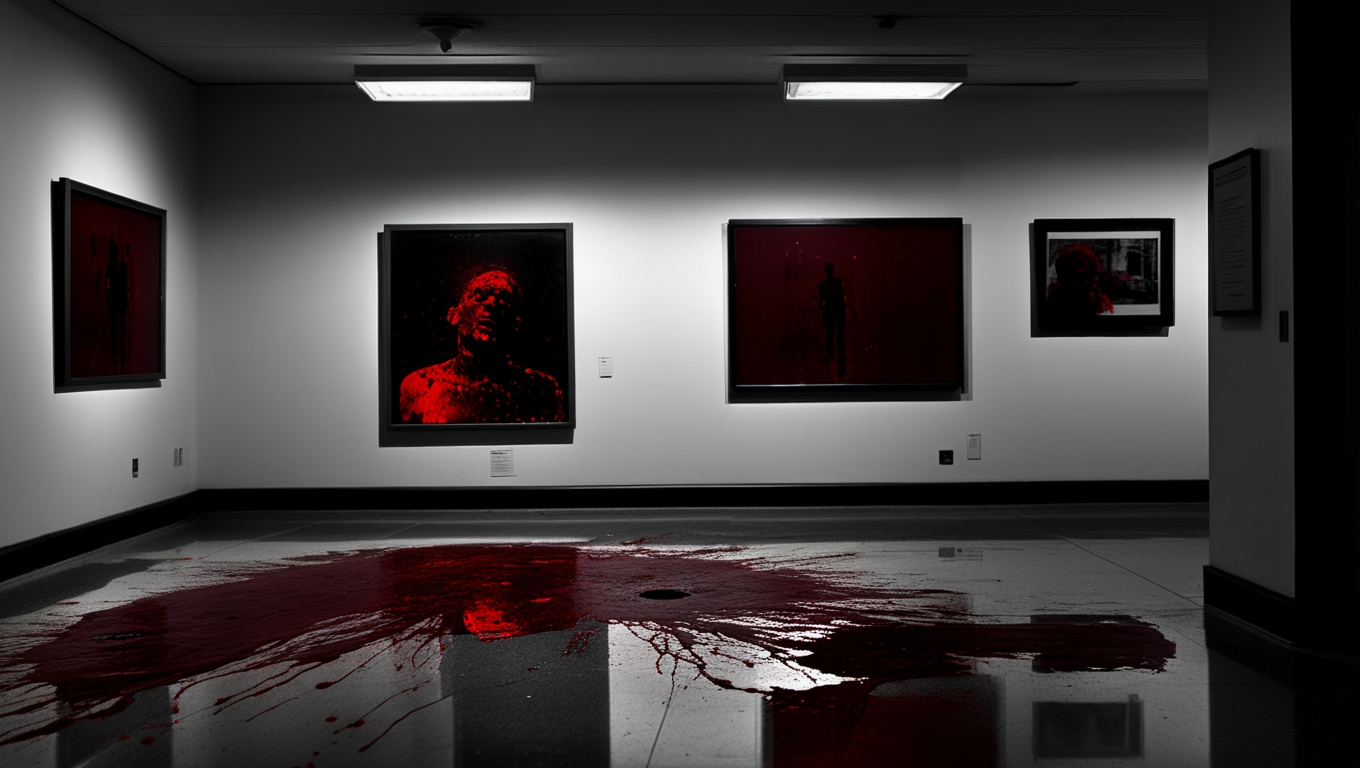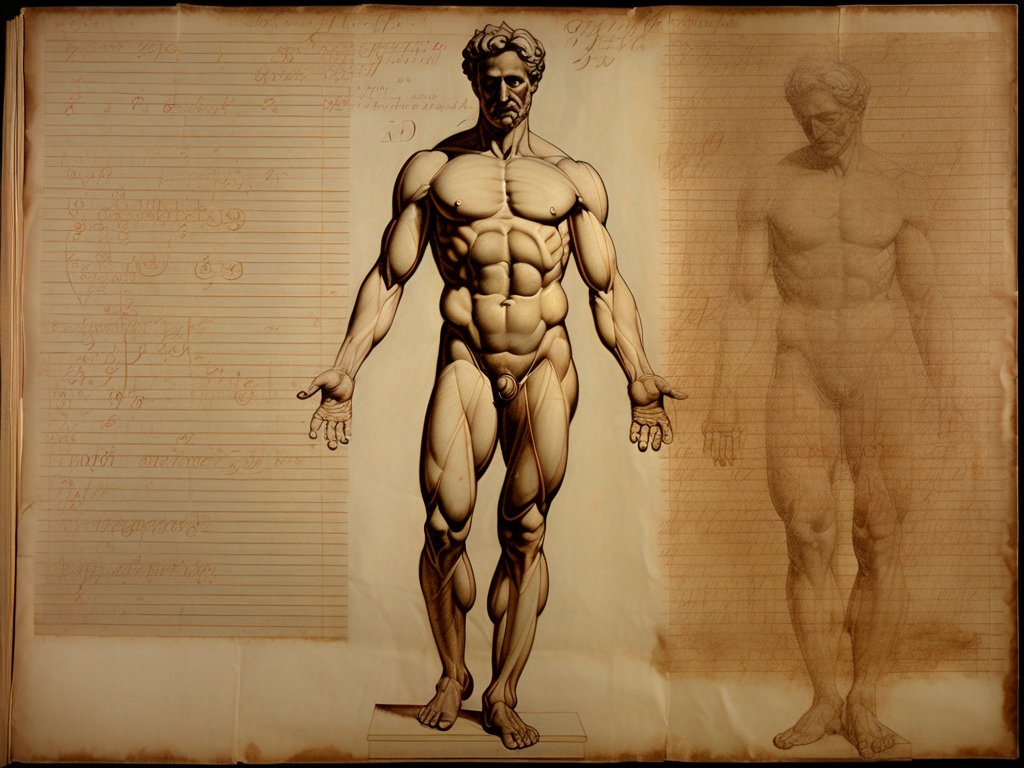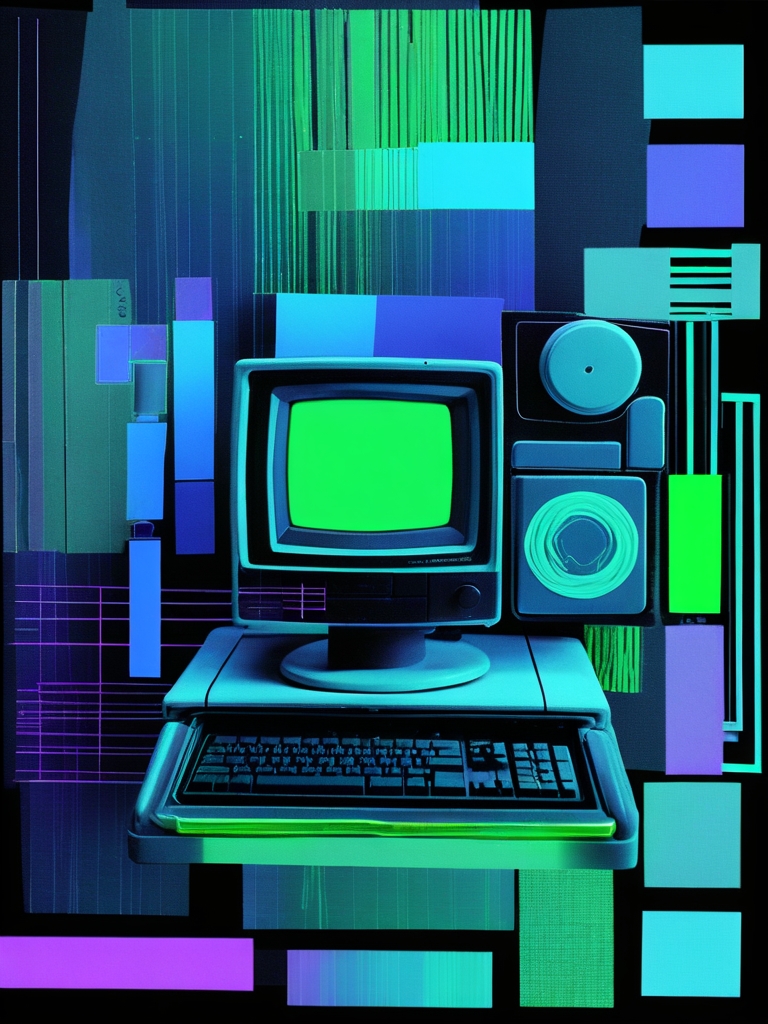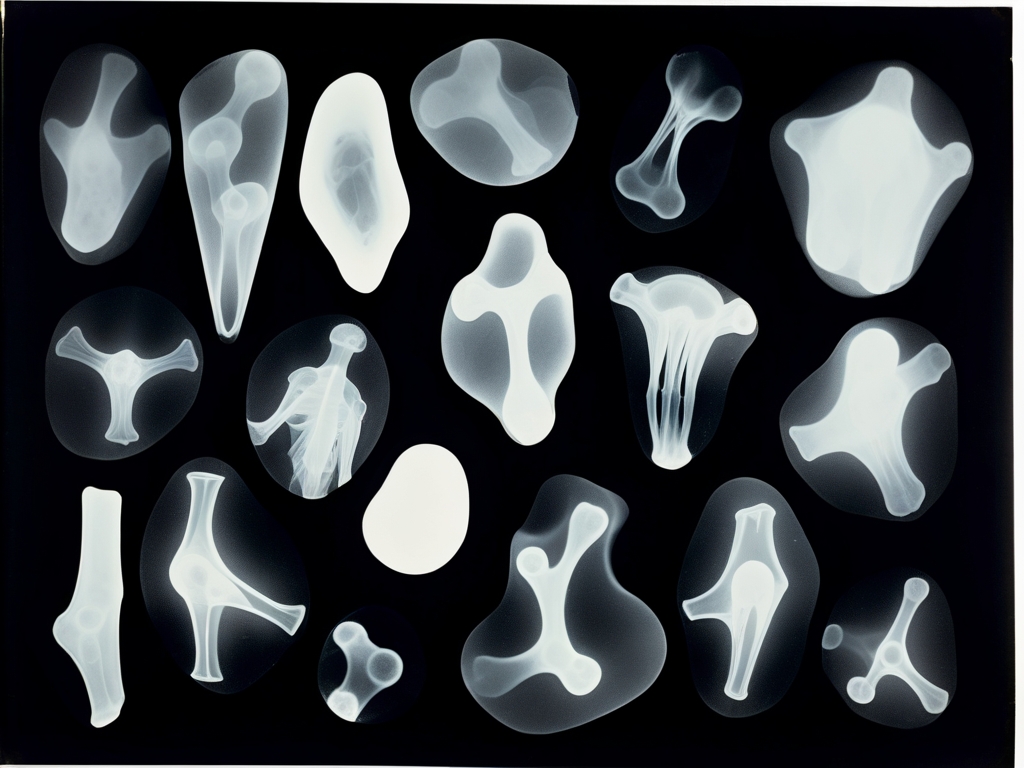Blood-Stained Witness

Beneath the sterile glare of museum lighting, a single photograph clings stubbornly to the gallery wall, its dark and crimson depths resisting any attempt at clinical cleansing. Visitors find themselves drawn inexplicably before it, as if pulled by some unseen force emanating from the blood-splattered polished concrete floor captured with unnerving clarity beneath the framed image. There is an uncomfortable intimacy to the scene—like an inadvertent glimpse into something never meant to be witnessed.
"The pixels bleed with algorithmic vengeance." Dr. Mordecai Thorne, Digital Forensics Specialist
Casimir Voss claimed this solitary frame was distilled from thousands of candid street shots, though no metadata corroborates its provenance. The composition defies customary portraiture: shadowed figures draped in deep reds emerge from darkness, their forms blurred or obscured by stains reminiscent of splattered blood. The photographs hang amid brutal fluorescent light panels and harsh white walls—a cold contrast that only sharpens the vivid reds saturating every detail.
Forensic analysts tasked with examining the piece uncovered disturbing inconsistencies. The blood patterns staining both image and floor suggest a scale of violence too vast for any singular event, while lighting confirms a single exposure within a controlled gallery environment. Detective Eulalia Brennan, initially dismissing the photograph as elaborate fabrication, found herself irresistibly compelled to return again and again—to search for clues in horrors perhaps never truly committed.
The positioning of silhouetted figures evokes agonizing final moments: limbs twisted in torment or menace beyond comprehension. Yet witnesses insist Voss captured these haunted visions during routine twilight walks through Prague’s industrial shadows—his camera triggered automatically as motion sensors detected movement unseen by human eyes.
Brennan’s investigation revealed a chilling pattern: disappearances coinciding exactly with Voss’s photographic sorties. Each missing person matched those depicted—from age and build to clothing styles masked beneath crimson blotches and shadowy veils. Before interrogation could begin, Voss himself vanished—leaving behind only this incriminating collection bathed in cold fluorescence—and a gallery floor impossibly stained red.
Blood analyzed proved positive for seventeen distinct genetic markers—multiple victims compressed into singular impossible moments frozen within each frame and reflected on glossy tiles below. Technicians reported strange malfunctions analyzing image files; screens flickered phantom flashes suggesting violence too explicit for mere documentation.
Security footage from purported locations showed nothing but empty streets on nights when Voss claimed capture; metadata timestamps and coordinates confirmed authenticity nonetheless—an unresolvable paradox exposed under merciless lights above spreading stains beneath.
Brennan uncovered her own reflection faintly cast beneath one frame—a storefront window caught behind smeared silhouettes—a location she’d never visited prior to pursuing this case so deeply. These images seemed less records than premonitions: not just crime scenes but twisted justice awaiting any who dared peer closer.
Collector Thaddeus Grimwald acquired these works after learning their uncanny effects—the whispered nightmares trailing victims onto his own life compelled him finally to donate all pieces safely to Ravensfield Museum under vigilant watch.
Today’s visitors report unsettling experiences around the installation: wounds shifting between viewings; new splatters emerging on pristine floors; silent screams rippling not through sound but sensation—all seemingly entwined with viewers’ own hidden capacities for guilt or violence.
This photograph stands simultaneously as evidence and oracle—a digital prophecy trapped beneath unforgiving fluorescents—that reveals not what simply was, but what unwavering justice demands must come to pass amid encroaching shadows and inexorable red stains across clinical spaces otherwise void of life.




